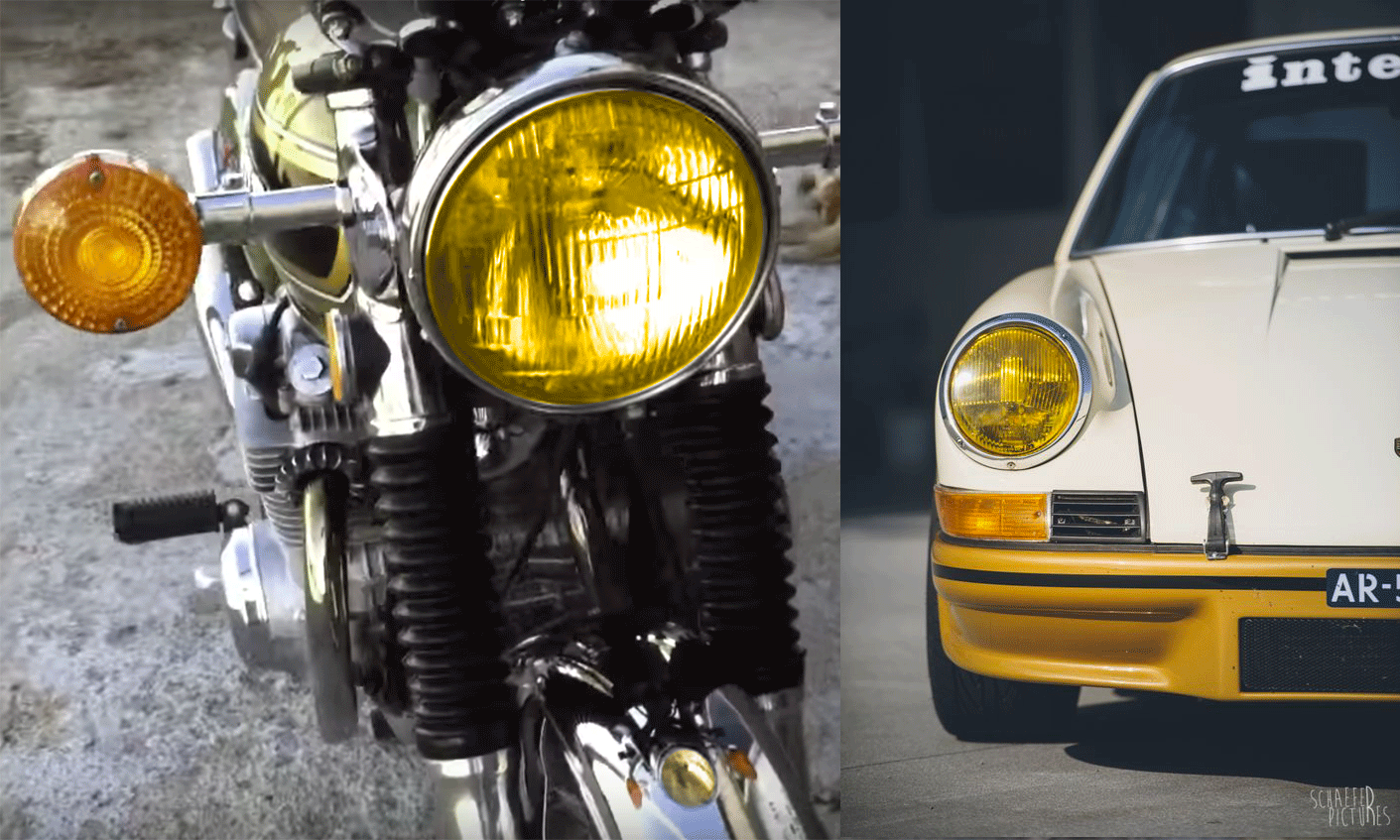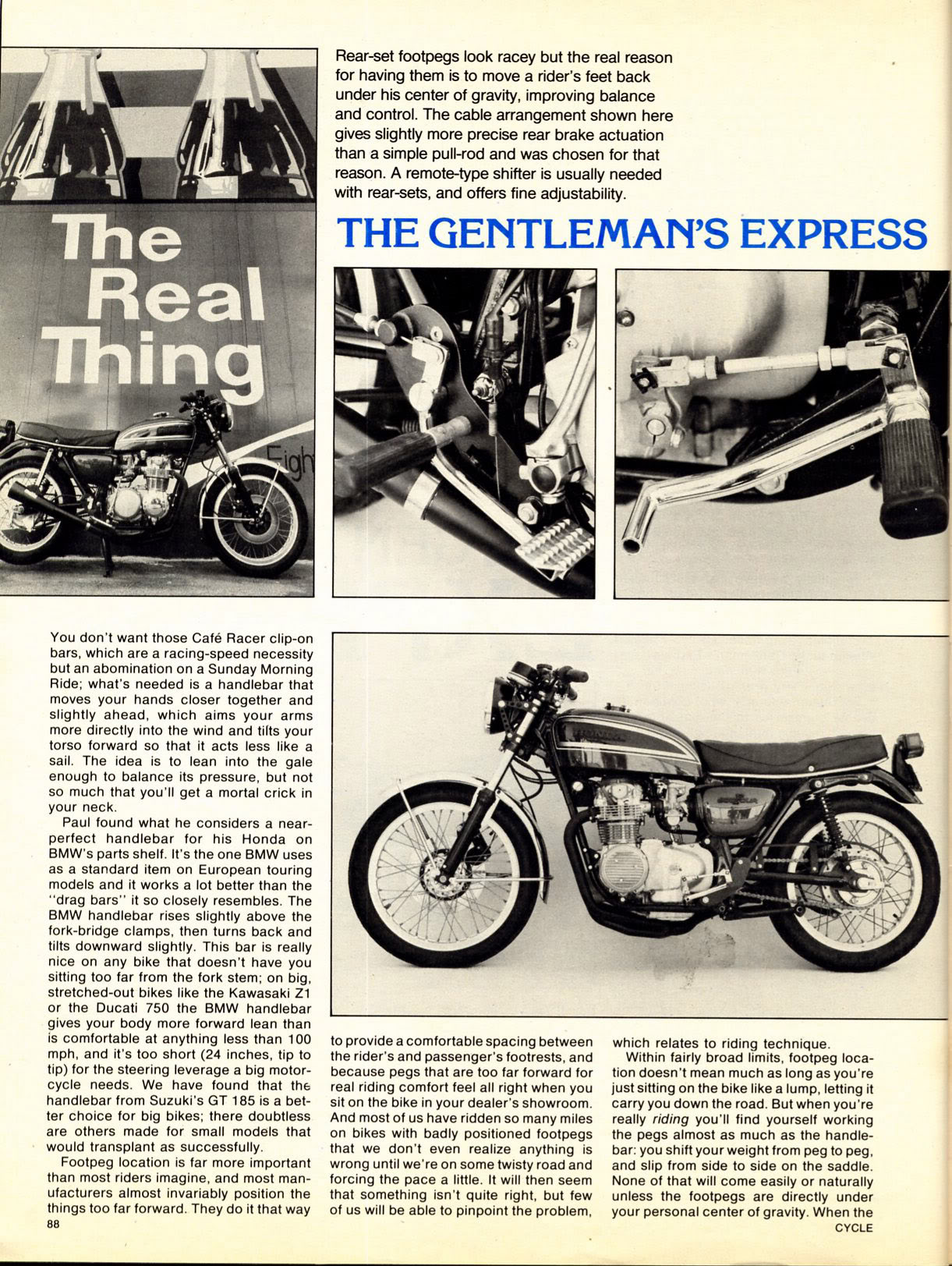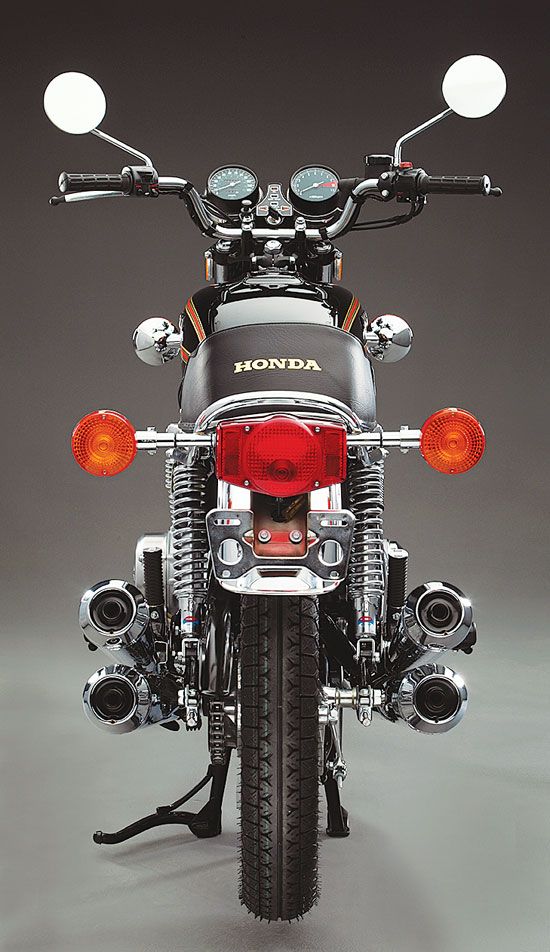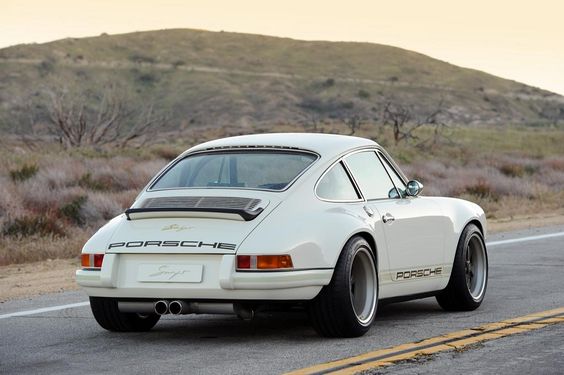In the dead of winter I purchased a 45 year old motorcycle. My neighbour helped me pull it out of my snow shovelled trailer. An older gentleman, he seemed surprisingly at ease as he guided it down over the harden ice. He shared how seeing the motorcycle brought him back.
But the bike looked in rough shape. It had been used in a movie shoot and they had wanted the appearance of a worn bike. I fired it up for him so he could hear the engine roar and the look in eyes said it all. “I didn’t expect that,” was all he said.
A 45 year old motorcycle, that looked like it was 45 years old, that ran beautifully at the first start of a button. That’s good engineering. Honda has left its mark.
When I first heard Honda’s CB 550 sports bike engine compared to that of the Porsches 911 sports car I was skeptical. Being a longtime admirer of the 911 this suggestion remained on my mind. And I wondered if a motorcycle and a car had anything in common. When considered from the engines of its day perhaps the analogy could make sense.

It was a well received engine. At 423 lbs dry weight it was lighter than the bigger engined sports bikes of the time and with a reduced wheelbase it was reviewed to handle well. Bike magazine reckoned there were several reasons for preferring the 500 series: ‘For starters the 500 is a lighter machine with a shorter wheelbase. It therefore has a better power-to-weight ratio than its bigger brother and, significantly, it handles better through the curves. In fact, the 500 is faster up to 60mph in a straight line and its 80mph only a fraction of a second behind the 750.’
The CB-550, unlike the model it was to replace, the CB-500, wasn’t widely exported until later models. Being first introduced to the US in 1973 and then later to Europe as the F version in 1975. Brazilian test rider Marcos Pasini wrote, that while the CB 550 Four was not officially exported to their market, the CB 550F was well received and that the CB 550 Four would have been as well by fans of the 500.
Honda published that the CB 550 featured “A new clutch. Smoother shifting. Free-valve front forks. Hydraulic front disc brakes … and we’ve increased the final reduction ratio for greater acceleration.” Upping the engine capacity by 10 percent, the CB 550 offered the same blend of performance and civility when it first arrived in the USA in late 1973. Making it the ideal base for a lightweight racer that could do the Ton, stock. The CB 500/550 remained a bit of a secret gem, preferred by cafe racers and used as “gentleman’s express” as featured in the 1975 edition of Cycle magazine.

Today people continue to enhance the performance of these bikes. And lately there’s been a revival of interest in the middleweight champion in large part because of the engine, the lower center of gravity, and yes its good looks.
 A quick glance at some of the threads on the cafe builds and you will see exactly what I mean, “I think custom 550’s have the most beautiful proportions.”
A quick glance at some of the threads on the cafe builds and you will see exactly what I mean, “I think custom 550’s have the most beautiful proportions.”
“Interesting. Different. Nicely engineered. CB550 motor. Bloody brilliant.”
“That bike is sweet! My CB 500 is nice and safe in my shed and has been for years, I first customized it as a cafe racer in ’85 as a young man, maybe it’s time to give it a birthday, after seeing this awesome bike I certainly feel inspired.”
As a 1970s sports bike, the design epitomized the look and stance of the sport bikes of its day. Further the engine was shorter than the CB 750’s which meant the center of gravity was lowered – which for handling is a good thing. So the 1970s Honda CB 550 sports bike has three elements in its favour. An handsome appearance, a well engineered engine, and balanced cornering. Like the Triumphs of the 60s and the Nortons of the 50s the Honda CB 500 and CB 550 embodied the spirit of the era. Sporty performance and charming looks.
I’ve loved Porsches long before their sudden rise of popularity lead them to be the collectable they are today. To me they are the quintessential classic styling of the 60s and 70s. Beautiful, elegant, and minimalistic.
Much like, in fact, the minimally styled Japanese and European sports bikes of the 60s and 70s.

Subtle cues such as the shape of their windows, the proportion of the rear spoiler, and the round lights work together to enhance the overall design. Porsche seemed to get the balance of chrome with the 911 just right as well, using it to guide the eye along edges and curves. It’s something you see too with the CB 550. It’s a very well considered design. And both the Porsche and CB550 have a community of builders dedicated to either customizing or restoring them. Singer and Magnus Walker come to mind.

The Porsche has an incredible racing heritage. Something Honda motorcycling shares. And like Porsche, private teams raced CB 550s and people continue to modify and race them in today’s vintage editions.
Until 1998, the 911 was an air-cooled sports car, modified by private teams for racing and rallying. Then by the mid 1970s it really came into its own. Winning the Targa Florio, 24 Hours of Daytona and then the 24 Hours of Le Mans in 1979. But what really sets the 911 apart is the classic styling, beautiful silhouette, and the marmite-like polarizing love/hate relationship by car enthusiasts.
The 911 was developed as a larger more powerful replacement of the Porsche 356.
Porsche, like Honda, developed both racing and production models of their vehicles. And the 911, like the CB550, was in their sports model range. And while Porsche become iconic for the sports cars of the 1970s, Honda became iconic for the sports bikes of the same era.
The Porsche 911 and Honda CB 550 were both considered engineering marvels of their time. When compared with a Ferrari, the 911 had a smaller engine, with a 2.0L (1,991 cc) 6 cylinder flat engine, yet Porsche decided to buck the trend with their rear engined flat 6. Yet, despite all logic the rear mounted engine would continue to win races. Similarly, while others were making 2 stroke 500cc sport bikes, Honda chose to engineer a 544cc 4 cylinder. As a result both were anomalies, both were lighter with excellent handing, both generated higher than expected power to weight ratios, and both were well suited for the race track.
Yet, where the CB 550 really stands out is the displacement to power ratio (DTP). The more power an engine can generate for its size and weight the faster it can make you go. Hence, the reason engineers try to make engines with smaller DTP ratios.
The CB 550 develops 50 horse power (HP) at 8,500 RPM. In other words, it utilizes 10.88 cc to put out 1 HP. Giving it a DTP of 10.88.
The Ferrari Dino 246 GT (1968-1974) had a 2419 cc engine putting out 193 HP. A DTP of 12.5.
And the Porsche 911?
Well, that produced a DTP of 13.7 from 1973-1989.
Surprisingly it took Porsche another 40 years before they released the 911 Carrera with a DTP of 9.96.
Honda’s CB 550 engine really was an engineering marvel. Even BMWs highly desirable R90/6 with its 898 cc engine producing 67 HP didn’t come close with its DTP ratio of 13.4.
Personally, I like the 70s sporty aesthetic of the original Honda CB 550s and 500s. There’s a certain symmetry and charm to their stature. I also understand one’s desire to modify it. The CB 550 engine offers a surprising punch and with simple weight reduction and some changes to the gearing and foot positioning can be converted into a very formidable racing machine that harkens to the days gone by.
When I catch a glimpse of a Porsche 911 passing by I find I’m drawn to it. It has an appearance that sets it apart. Comparing a motorcycle of the 70s with a car that continues in production today is a far stretch to say the least. Yet, from a merely observational perspective, the parallels are undeniable. With engineering at the heart of both machines, both replacing outgoing models, both perhaps representing the best of the engineering of their times, and both classics are immediately recognizable and iconic of their era.
